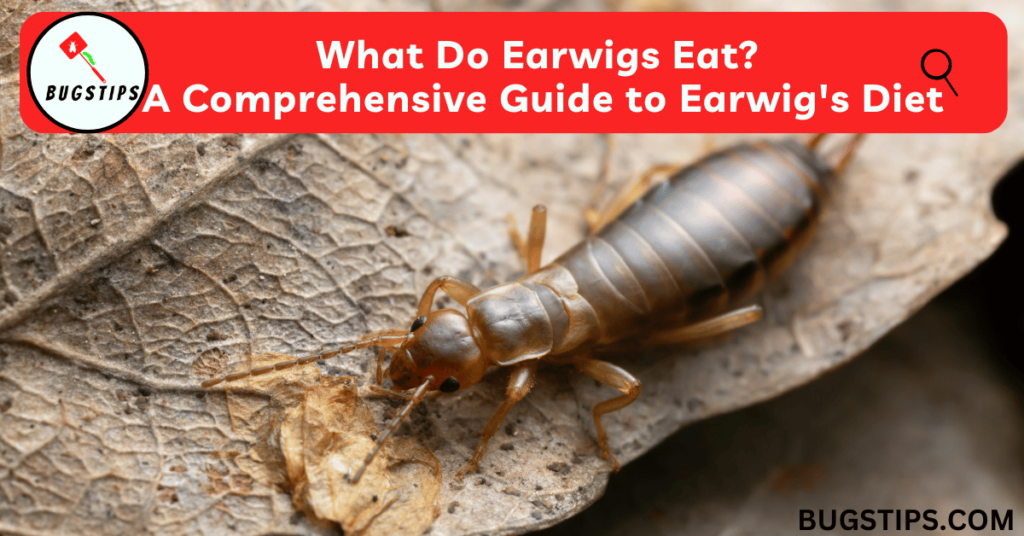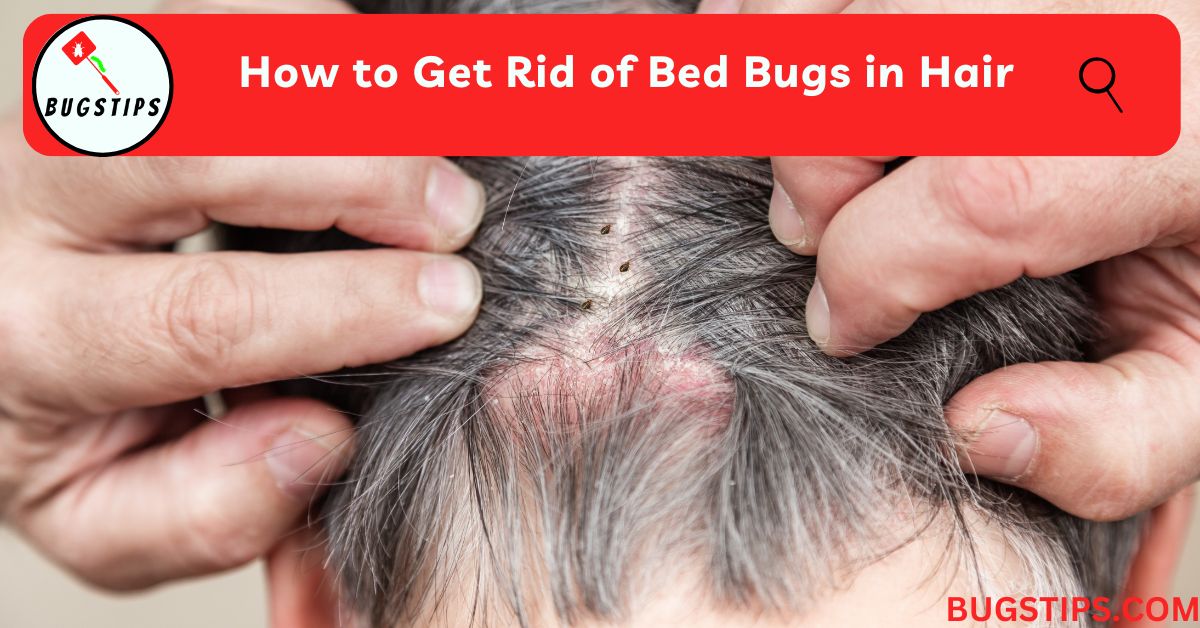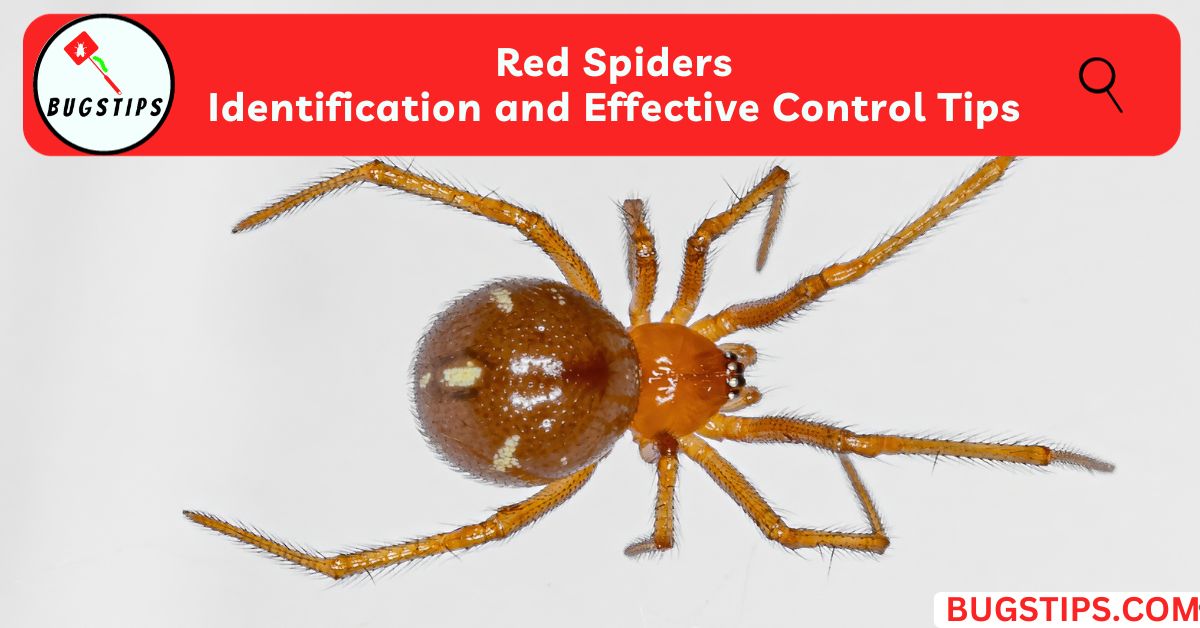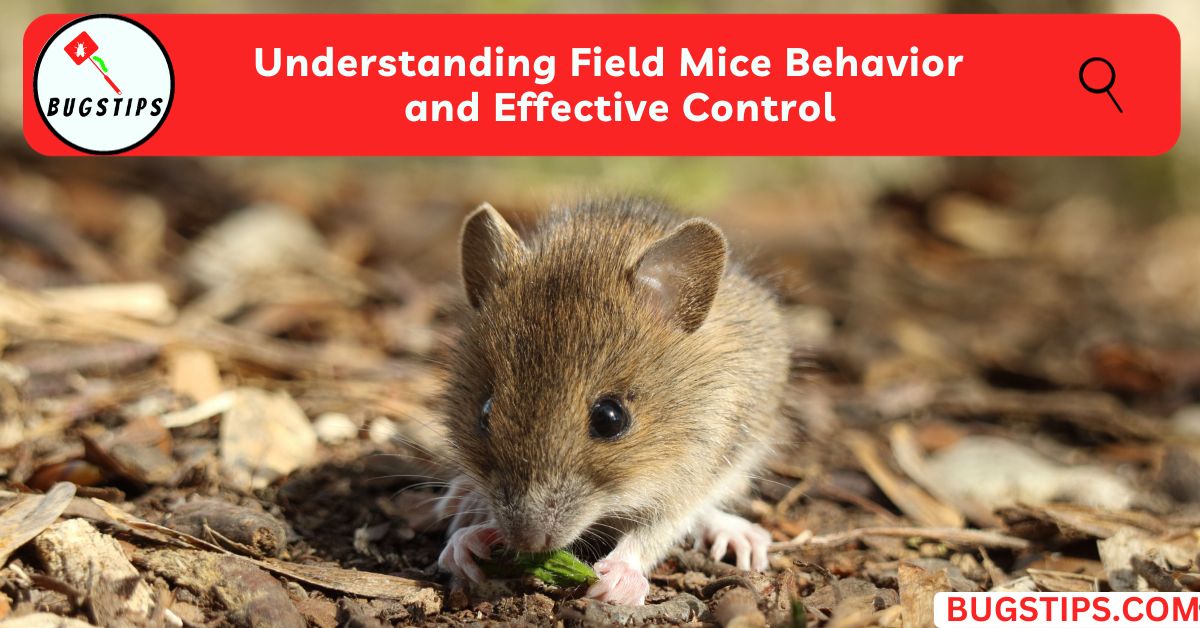This post may contain affiliate links which means as an Amazon Associate, this site may earn a small commission on qualified purchases made through links at no extra cost to you. Learn more on Affiliate Disclosure

Earwigs are small insects that are known for their distinctive pincers at the end of their abdomen. They belong to the order Dermaptera, which includes more than 2,000 species of earwigs worldwide.
Earwigs are mostly nocturnal and can be found in damp and dark places, such as under rocks, leaves, and logs.
Understanding the diet of earwigs is crucial for gardeners, homeowners, and pest control professionals as they can cause damage to plants and crops.
Earwigs are known to feed on a variety of materials, including other insects, decaying organic matter, and plant material. Therefore, knowing what they eat can help in developing effective strategies to control their population.
This article will provide a comprehensive guide on the diet of earwigs. We will answer the question, “What do earwigs eat?” and explore their feeding habits in various environments, such as in the house, garden, and the wild.
We will also discuss the quantity of food they consume, how they find their food, and whether their diet changes by season.
Additionally, we will look at the potential competition they may have for food and examine if they eat clothes, wood, or other pests. and we will also provide tips on how to get rid of earwigs and prevent infestations in your home and garden.
What Do Earwigs Eat? Omnivorous Diet of Earwigs: Insects, Plants, and Other Food Sources

Earwigs are omnivorous insects that feed on both animal and plant material. Their diet can vary depending on the availability of food sources in their habitat.
Here is a breakdown of the various types of food that earwigs consume.
Earwigs as Omnivores
Earwigs are opportunistic feeders that will consume any available food source. They are equipped with powerful mandibles that can crush and chew through a variety of materials.
Insects as a Major Component of Their Diet
- Small Insects and Arthropods
Earwigs feed on a wide range of small insects and arthropods, including aphids, mites, and small caterpillars. They are particularly fond of soft-bodied insects and will use their pincers to catch and consume them.
- Dead Insects and Carrion
Earwigs also consume dead insects and carrion. They are scavengers by nature and will take advantage of any available food source.
Plant Material as Food
- Decaying Organic Matter
Earwigs consume decaying organic matter, such as fallen leaves and dead plant material. They play an important role in breaking down organic material and recycling nutrients in the soil.
- Pest Plants, Seedlings, and Tender Plants
Earwigs are known to feed on a variety of pest plants, seedlings, and tender plants. They are particularly fond of lettuce, strawberries, and potatoes.
- Fruits and Vegetables

Earwigs can also feed on fruits and vegetables, such as peaches, apricots, and tomatoes. They are known to cause damage to these crops by feeding on fruit or foliage.
- fungi
Other than the food sources mentioned earlier, earwigs also consume fungi. They are known to feed on mushrooms and other types of fungi found in damp and dark environments.
This is why earwigs can often be found in moist areas such as under piles of leaves or in damp soil.
Other Food Sources
- Clothing and Fabric
Earwigs have been known to feed on clothing and fabric. They are attracted to damp and dark environments and may feed on clothing left in a damp basement or laundry room.
- Wood and Other Cellulose Materials
Earwigs can also feed on wood and other cellulose materials. They are known to cause damage to wooden structures and may feed on cardboard and paper products.
- Pet Food and Other Human Foods
Earwigs may also consume pet food and other human foods. They are attracted to sugary foods and may feed on spilled juice or soda.
The Fascinating World of Earwig Poop: 12 Surprising Facts You Didn’t Know
How Much Do Earwigs Eat?
Earwigs are known to be omnivores, feeding on both plant and animal matter. However, the amount of food they consume can vary depending on a variety of factors, including environmental conditions and the availability of food sources.
So, how much do earwigs actually eat? The answer to this question is not straightforward and requires a deeper understanding of their feeding behavior and consumption patterns.
Factors affecting earwig feeding behavior and appetite
Temperature and humidity can have a significant impact on earwig-feeding behavior. High temperatures and low humidity can cause earwigs to become inactive and reduce their appetite, while cooler temperatures and higher humidity can increase their activity level and food consumption.
Earwigs also tend to be more active and consume more food during their busy feeding periods, primarily at night. During the day, they tend to hide in dark, moist places and conserve their energy.
General patterns of earwig feeding and consumption
Earwigs are known to consume a variety of insects and arthropods, including mites, aphids, and small spiders. They are also attracted to decaying organic matter, such as dead insects and plant material.
In terms of plant matter, earwigs are known to consume a range of items, including fruit, vegetables, seedlings, and pest plants. They can cause significant damage to crops and gardens if their populations are not controlled.
While earwigs can consume a variety of food sources, the amount they consume can vary depending on their population density and the availability of food sources. High population densities can lead to increased competition for food, which can result in reduced food consumption and slower growth rates.
Baby Earwig Food: What Do Nymph Earwigs Eat?
Earwigs are fascinating insects that exhibit a diverse diet, including both plant and animal matter.
This also holds true for the nymph stage of earwigs, which feed on flower buds, leaves, and fruit of trees during the spring flush months, which are March through May.
Other than plant matter, earwig nymphs also feed on insects. Most earwig species consume decaying vegetation found under wet leaves or mulch.
However, they can also attack living plants, including vegetables, which suggests that the diet of nymph earwigs is similar to that of adult earwigs, comprising both plant and animal matter.
Importance of maternal care and feeding for earwig larvae
Maternal care and feeding are crucial for earwig larvae, which can have significant consequences for population growth and survival. Earwig mothers guard their eggs and nymphs, and will often regurgitate food to feed their young.
This behavior enhances the survival of earwig offspring by providing them with adequate nutrition and protection. Earwig mothers can also manipulate the diet of their offspring by selectively feeding them based on their nutritional needs.
As you can see earwig nymphs have a diet similar to adult earwigs, including both plant and animal matter. Maternal care and feeding are essential for earwig larvae, and can significantly impact population growth and survival.
Earwig mothers provide their offspring with adequate nutrition and protection, which enhances the survival of earwig nymphs.
Earwig Feeding Behavior Across Seasons: Do They Alter Their Diet?
Earwigs are opportunistic feeders and their diet can vary depending on the time of year and the availability of food sources. In the spring, earwigs feed on flower buds, leaves, and fruit of trees during the spring flush months.
During the summer, they may switch to feeding on other insects, such as aphids or mites, and also consume plant matter. In the fall, they often turn to feed on decaying vegetation and organic matter as plant growth slows down.
Changes in temperature, precipitation, and daylight hours can all affect the availability of food sources for earwigs, leading to adaptations in their feeding behavior.
Earwigs have been known to adjust their diet based on seasonal changes and can survive periods of food scarcity by reducing their metabolic rate and entering a state of hibernation known as diapause.
How Do Earwigs Find Their Food?
Earwigs use a variety of mechanisms to detect and locate food sources. One of the primary ways they find food is through their sense of smell, which is located in their antennae. They also have sensitive mouthparts that can detect food by touch and taste.
When an earwig detects a potential food source, it will use its antennae to determine whether the item is edible.
If the food is determined to be suitable, the earwig will use its mandibles to grasp and manipulate the item. Earwigs have strong jaws and can quickly crush and ingest food.
Behavioral responses to different types of food vary among earwig species. Some species prefer to scavenge for decaying vegetation and other organic matter, while others actively hunt for insects and other prey.
Additionally, some earwig species are attracted to light sources and may be found near porch lights or streetlights at night.
Earwigs have a variety of strategies for finding and obtaining food. Their sense of smell and sensitive mouthparts allow them to quickly locate and consume a wide range of plant and animal matter.
Earwig Competition for Food: Interactions with Other Insects and Ants
Earwigs may compete with other animals for food, including other insect predators and social insects like ants.
For example, earwigs have been observed competing with ground beetles and spiders for prey such as aphids and caterpillars. In some cases, earwigs have even been known to prey on each other, particularly when food sources are scarce.
Ants and other social insects may also compete with earwigs for food resources. Some species of ants have been observed stealing food from earwig nests, while others may attack and kill earwigs.
However, some studies suggest that earwigs and ants may also have a mutually beneficial relationship in some cases, as earwigs may help control other insect pests that ants feed on.
These interactions between earwigs and other animals can have important effects on ecosystem dynamics and biodiversity.
For example, competition with other insect predators can influence the abundance and distribution of different species, which in turn can affect the composition of entire ecosystems.
In addition, the presence of earwigs may also have indirect effects on other animals by influencing the availability of food resources and altering the behavior of prey species.
What Do Earwigs Eat In The Wild?
In the wild, earwigs eat a variety of foods depending on their availability and the season. During the spring and summer months, earwigs feed on fresh leaves, flower buds, and fruits of trees. They may also eat insects such as aphids, mites, and caterpillars.
In the fall and winter months, earwigs turn to scavenge and feed on decaying vegetation found under wet leaves or mulch.
They also eat fungi and mold that grows on decaying plant matter. Some species of earwigs have been known to feed on living plants, including vegetables and crops, which can make them pests in agricultural settings.
Earwigs have a diverse diet and are adaptable to different food sources depending on the environment. Their feeding behavior is important for maintaining ecosystem balance and contributes to nutrient cycling in the soil.
Are there any Commercial Foods for Earwigs?
Earwigs can also be attracted to certain types of pet food, such as dog food, which they may consume if it is left out.
However, it is important to note that earwigs should not be relied upon as a primary means of pest control, as they can also cause damage to plants and other structures.
While there are no specific commercial foods designed for earwigs, some commercial diets for other insects may be suitable for them.
These diets typically come in the form of pellets or powders and are made up of a combination of plant-based and animal-based ingredients.
In addition to commercial diets and pet food, earwigs can also be fed a variety of fresh fruits and vegetables, such as lettuce, cabbage, and strawberries. It is important to ensure that any food provided to earwigs is fresh and free of pesticides or other harmful chemicals.
However, it is important to remember that earwigs should not be relied upon as a primary means of pest control and that they can also cause damage to plants and structures.
How to Prevent Earwigs from Damaging Your Garden Plants
Now that we have a clear understanding of what earwigs eat and how they eat, it is important to keep them away from your plants to prevent damage.
Earwigs are attracted to decaying plant material, so removing dead leaves and other debris from the garden can reduce their food source and discourage them from making a home near your plants.
You can also use a sticky trap, made from a yellow index card coated in petroleum jelly, to catch earwigs and prevent them from reaching your plants.
Another effective method to keep earwigs away from your garden plants is to create a physical barrier. This can be done by placing a strip of copper tape around the base of each plant.
The tape delivers a mild electrical shock to the earwigs, deterring them from crossing over it.
Additionally, you can create a ring around each plant with diatomaceous earth, which is a powder made from the fossilized remains of diatoms. This powder is abrasive to the exoskeleton of the earwigs and causes them to dehydrate and die.
It is also important to keep your garden well-watered, as earwigs are attracted to damp environments.
By watering your plants in the morning and allowing them to dry throughout the day, you can reduce the likelihood of earwig infestations.
You can read our entire article about Tips for Safely Removing Earwigs From Your Garden for more information on how to keep Earwigs away from your plants.
Final Thoughts
Earwigs are omnivorous insects that eat both plant and animal matter. Their diet includes soft fruits, leaves, stems, insects, carrion, and fungi.
The availability of food can have a significant impact on their behavior and reproductive success.
While earwigs are often seen as pests, they play an important role in the ecosystem as decomposers and predators.
FAQs
What do earwigs eat in the house?
While earwigs are more commonly found outside in gardens and natural habitats, they can occasionally be found inside homes. In the house, earwigs may feed on food crumbs, leftover pet food, and other organic matter.
What do earwigs eat in the garden?
Earwigs do not typically eat ants as they mostly feed on plant matter, other insects, and decaying organic material.
Do earwigs eat ants?
Earwigs are known to prey on a variety of insects and other small a
What do earwigs drink?
Earwigs require water to survive and will drink from moist surfaces or droplets of water.
Do earwigs eat plants?
Yes, earwigs are known to eat plants. While they may occasionally nibble on tender foliage, they are not considered a major threat to most garden plants. However, they may eat some types of fruits and vegetables, particularly those that are overripe or damaged.
Do earwigs eat wood?
Earwigs do not eat wood but they may seek shelter in decaying or rotting wood.
Do earwigs eat bed bugs?
While earwigs are known to consume a variety of insects, including aphids, mites, and other small pests, there is no evidence to suggest that they specifically eat bed bugs.
Do earwigs eat termites?
Earwigs are not known to be significant predators of termites, and they do not usually feed on wood. While they may occasionally come across and consume termites.
Do earwigs eat onions?
Earwigs do not typically eat onions but they may cause damage to onion plants.
Do earwigs eat petunias?
Yes, earwigs are known to eat petunias. They are also a favorite food of earwigs.
Do earwigs eat pepper plants?
Yes, earwigs can eat pepper plants, especially the leaves, and They tend to feed on the softer plant tissues and may leave irregular holes in the leaves.
Do earwigs eat at night?
Yes, earwigs are more active at night and may feed during this time.
Do earwigs eat hostas?
Yes, earwigs are known to eat hostas. Earwigs can cause significant damage to hostas by feeding on the leaves and flowers, which can result in unsightly holes and ragged edges.
Do earwigs eat cucumber plants?
Earwigs can eat cucumber plants. They are known to feed on the leaves, flowers, and fruits of the cucumber plant.
Do earwigs eat tomatoes?
Earwigs can eat tomatoes and may cause damage to the plants.
Do earwigs eat spider mites?
Earwigs do not typically eat spider mites as they prefer to feed on other insects, plants, and organic matter.
Resources : (Further Reading)
University of California Agriculture and Natural Resources: “European Earwig”
University of Florida Institute of Food and Agricultural Sciences: “Earwigs”
“Earwigs: Bane of Summer Garden Plants” by Rebecca Finneran on Michigan State University




